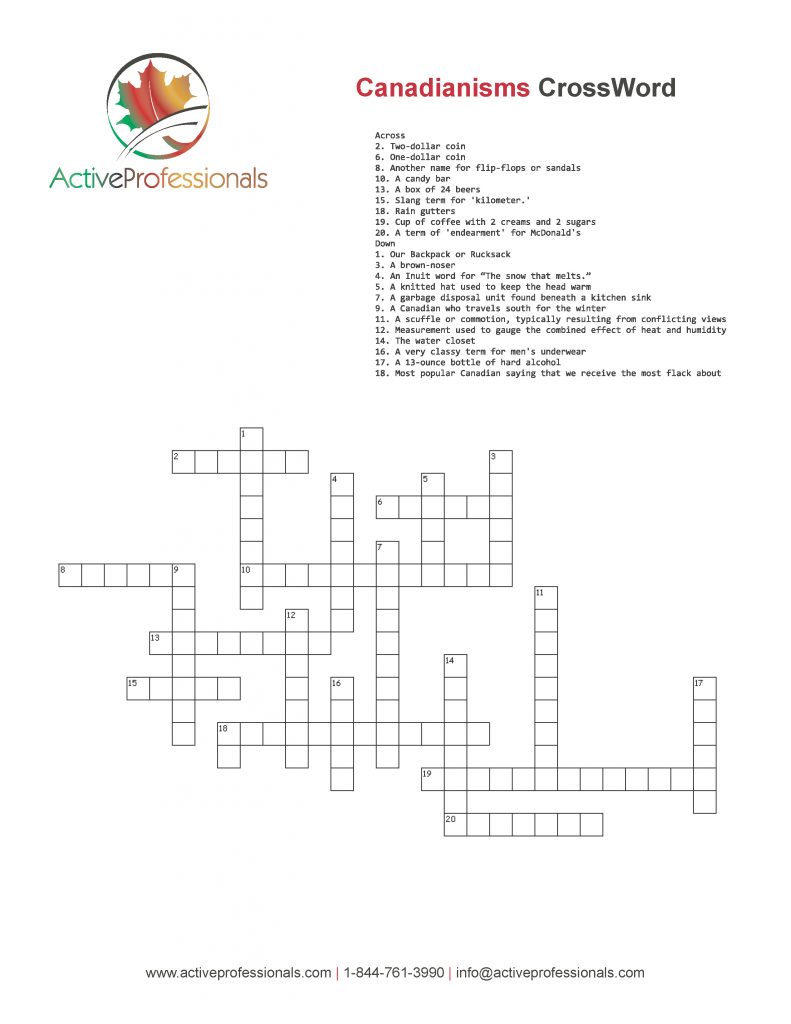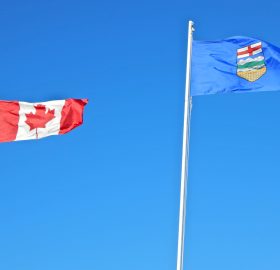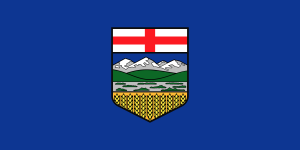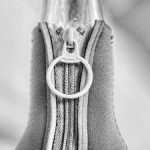Crossword Puzzle: Canadianisms
How well do you know Canadian slang? This crossword puzzle will test your knowledge.
Alberta: the history and more
Alberta, the most westerly of Canada’s three Prairie Provinces, joined the Confederation of Canada and became a province on September 1, 1905; the same day that Saskatchewan joined the Confederation. Before then Alberta and Saskatchewan were considered part of the Northwest Territories.
Alberta was named after Princess Louise Caroline Alberta, the fourth daughter of Queen Victoria. At the time, Queen Victoria was the sovereign head of state for the British Empire.
Origins
Alberta was inhabited by First Nations’ indigenous peoples for 10,000 years before it was discovered by European explorers in the 1700’s. Europeans such as Peter Fidler, David Thomson and Alexander MacKenzie, were the first to establish European settlements and map the vast area. Alberta is the fourth largest province in area in Canada. The first European settlements in the province were Fort Chippewan and Fort Vermillion, established in 1788.
Alberta is also the fourth largest populous province in Canada with over 4.2 million people. While Calgary is the largest city in the province, Edmonton, the second largest city, is Alberta’s capital. The first premier of Alberta was Alexander C. Rutherford, who served from 1905-1910. Rachel Notley is the province’s current premier, elected in 2015.
Landscape
The province’s landscape is rich and diverse. There are Badlands near Drumheller in the east and Milk River in the south, and the prairie stretch north and west between them eventually giving way to the foothills that roll into the spire peaks of the Rocky Mountains.
Alberta is part of the Prairie Provinces, along with Saskatchewan and Manitoba. It is known for its big open spaces and big skies, providing beautiful sunsets. The ranches and farms reflect the open spaces as many of them are sprawling, huge spreads used for raising cattle and growing grains. The land is rich and fertile, if irrigated, where fields of wheat, canola, barley and oats thrive. Wheat is the largest agricultural export from the province, followed by canola, live cattle and Durum wheat. The main destination for these exports is the United States, Canada’s largest trading partner.
Industry
Oil
The main industry in Alberta is oil. Alberta’s oil is the third largest export commodity in the world, behind Venezuela and Saudi Arabia, and the province houses the third largest oil reserves in the world. Alberta is also the second largest exporter of natural gas in the world and is the world’s fourth largest producer of natural gas.
Much of Alberta’s crude oil is found in the Tar Sands in northern Alberta, although the first major crude oil discovery was found in Turner Valley, south of Calgary, in 1936.
Tourism
Tourism is another major industry in Alberta as visitors spent over $8 billion in the province in 2016. Over 35 million tourists visit the province annually and it is easy to understand why so many people visit the province, with its pristine lakes and mountains which provide cross-country and downhill skiing and fishing, as well as hiking and mountain climbing.
The Bow River is internationally renown for trout fishing. Other popular tourist destinations besides the Calgary Stampede and the other major cities include Banff, Jasper, Lake Louise and Waterton Park. If you are searching for less popular destinations check out Dry Island Buffalo Jump Provincial Park or Head-Smashed-In Buffalo Jump, a World Heritage Site. You may also want to visit Dinosaur Provincial Park near Brooks, or Drumheller and Milk River. It is like taking a trip back through time with their diverse landscapes that contain mushroom-shaped hoodoos, eroded by the wind and the weather over thousands of years. The Royal Tyrrell Museum near Drumheller has the largest collection of dinosaur bones and fossils in the world, and Drumheller has the tallest standing dinosaur in the world. It is worth a trip just to see it.
People
Some notable Albertans include:
- Tommy Chong (actor);
- Tricia Heifer (model/actress);
- Joni Mitchell (singers/songwriter);
- K.D. Lang (singers/songwriter); and
- Feist (singers/songwriter), to name a few.
Stay in Canada After You Graduate
Are you an international student who is about to complete your post-secondary education in Canada? Do you wish to stay in Canada after you graduate and obtain Canadian work experience? Then the Post-Graduation Work Permit program (PGWPP) may be what you’re looking for.
To work in Canada after you graduate, you need a work permit. The PGWPP allows students who have graduated from eligible Canadian designated learning institutions to obtain an open work permit and gain valuable Canadian work experience. An advantage of this program is that the work experience you gain may help you qualify for permanent residence.
How Long Will My Permit Be?
The duration of your post-graduation work permit (PGWP) will depend on the length of your study program. If your educational program was between eight months to two years, your PGWP may be valid for up to the same length as your study program. Alternatively, if the education program you completed was two or more years, then your PGWP may be issued for 3 years. If you complete more than one eligible program, you may be able to get a PGWP that combines the length of each program.
Programs that run for less then eight months are not eligible for the PGWPP. You also can’t get a PGWP if you already had one after completing an earlier program of study.
Am I Eligible?
On February 14, 2019, the Government of Canada extended the time to apply from 90 to 180 days, six months, after your designated learning institution issues your final marks confirming that the requirements to complete the program of study have been met.
You must also have maintained full-time status as a student in Canada during each semester of your study program (except your final semester, which can be part-time, or if you took a leave from studies) to be eligible.
Special cases:
If you’re in any of these groups, there are unique requirements to be aware of that may influence your eligibility.
- Accelerated programs
- Distance learning
- Leave from studies
- Transfers between schools
- Canadian study programs with an overseas component
- Flight school graduates
What Happens if I Don’t Qualify?
If you’re not eligible for a PGWP, you may still be able to work in Canada after you graduate. Contact us to have one of our Regulated Canadian Immigration Consultants help you determine the best program for your situation.
Interim Pathway for Caregivers – The Basics
The Interim Pathway for Caregivers is a dedicated pathway to permanent residence for qualifying in-home caregivers in effect March 4, 2019 until June 4, 2019. If you have work experience in Canada as a home child care provider or home support worker, you may be able to apply for permanent residence.
To be eligible to apply, you must have the required:
- status in Canada
- work experience
- language levels (CLB 5 in English or NLCL 5 in French)
- education (equal to a Canadian secondary school, also known as high school, diploma)
You must also plan to live outside the province of Quebec.
At the Time You Apply
To meet the status requirements when you apply, you must either have a valid work permit; have applied to extend your work permit and be waiting on a decision; or have applied to restore your status as a worker.
For your work experience in Canada to be eligible, you need to have worked as a home child care provider, a home support worker, or a combination of the two. You will also need to have gained this experience while working in the Temporary Foreign Worker Program.
You will also need to have at least 12 months of full-time work experience (at least 30 hours of paid work per week) since November 30, 2014. Breaks in employment (for example, periods where you weren’t working, on sick leave or parental leave) are allowed, however, any work experience you had while you were a full-time student doesn’t count.
It is important to note you’ll have to include documents to show proof of your work experience in your application.
If you’re interested in applying and believe you meet the above criteria, contact us. We would love to assist you with the application process.
A Brief History of Canada
Canada is relatively a new country compared to the long-established nations of the world in Africa, Asia and Europe. Although, Canadian history does have a rich pageantry in the short time since it has become an independent nation.
Origin
Canada’s name originates from the Huron/Iroquois name ‘Kanata’, which means ‘settlement’, or ‘village’. The first inhabitants on the land were indigenous people. The Vikings, Norsemen, also established a settlement in Newfoundland around 1001 AD, and explorer Leif Erikson and his crew were the first Europeans to touch the earth in North America, 500 years before Christopher Columbus arrived.
Exploration
The country was first explored mainly by French explorers such as Jacques Cartier, who in 1534 mapped the Gulf of St. Lawrence and claimed the land as the Colony of New France. Then Samuel de Champlain established the city of Quebec in 1608 and was named the ‘Father of New France’. Rich in natural resources and a booming fur trade, other nations, such as Great Britain, also wanted to claim Canada as its own.
Govern & Ruling
Prior to the birth of the nation, part of the land was under French rule. During the next 200 years, conflict ensued and in 1763 it was ceded to England after the French were defeated on the Plains of Abraham just outside of Quebec City, in the Seven Years War. Canada became a colony of England until 1867, when the new independent nation, the Dominion of Canada was established. Today, Canada is still a member of the British Commonwealth.
Under the guidance of Canada’s first Prime Minister, Sir John A. Macdonald, the Province of Canada (which consisted of Lower and Upper Canada, now the provinces of Ontario and Quebec), was joined by two other British colonies, New Brunswick and Nova Scotia, to form a confederation of provinces and a self-governing entity. On July 1, 1867, the Dominion of Canada was born.
There are now 10 provinces and three territories that comprise Canada, and each province and territory has its own capital. In 1870 the province of Manitoba and the Northwest Territories joined confederation. Using the promise of completing a railroad across Canada by the Canadian Government, British Columbia joined the Confederation in 1871. Prince Edward Island, Canada’s smallest province, was added to the nation in 1873. 25 years later, in 1898, the Yukon Territories became part of Canada, partially due to the Yukon Gold Rush that needed policing at the time. Alberta and Saskatchewan joined in 1905, and the last province to become part of Canada was Newfoundland and Labrador, in 1949. Nunavut, which was part of the Northwest Territories, entered Confederation in 1999.
There have been 22 Canadian Prime Ministers, from the first one, Sir John A. Macdonald to our current Prime Minister Justin Trudeau. William Lyon Mackenzie King has been the longest serving Prime Minister as he was the head of government for more than 21 years. John A. MacDonald, Wilfred Laurier and Pierre Trudeau all served as Prime Minister for more than 15 years each.
War and Conflict
Since becoming a nation Canada has been involved in 14 different wars and conflicts throughout the world, starting with the Fenian Raids in 1866-1871. As a colony of Great Britain, Canadians fought in the War of 1812 with the British against the United States and it was during the war, due to the American threat, that the city of Ottawa was made the capital of Canada.
Canada had a defining moment on the international stage in World War 1 in 1917, when four divisions in the Canadian Corps attacked Vimy Ridge during the Battle of Arras in France and overtook the Germans in four days. It was a huge victory but had a terrible cost as over 10,000 Canadians either lost their lives or were wounded in the battle. It was the first time in history that Canada attacked another nation as one military unit.
Canada also served and played a big role in the Second World War, declaring war on Germany a week after the British declared war on the axis nations. The nation participated in the Korean War and present day it is battling ISIS, along with numerous other countries.
Despite being involved in numerous wars and conflicts, Canada is viewed as a peacekeeping nation, partially due to the work of Canadian diplomat and former Prime Minister Lester B. Pearson. In 1957 Pearson won the Nobel Peace Prize for his involvement in solving the Suez Crisis, convincing Britain and France to depart from Egypt. He created the United Nations Emergency Force, which is the modern concept used at present for peacekeeping.
Want to learn more about Canada?
14 Canadian Facts You Should know
There is so much to learn about a new country when you first arrive. Here are 14 facts about Canada that you should know as you take off on your Canadian journey.
Canadian Facts
- Canada is the second largest land mass country in the world after Russia.
- Canada borders three oceans; Atlantic, Arctic and Pacific.
- Canada has the longest shared border in the world with the United States, 8893 kms.
- Boasting the longest coastline in the world, Canada has 243,977 kms of shoreline.
- There are approximately 36 million people living in Canada.
- O’ Canada is the national anthem.
- There are two official languages in Canada, English and French.
- Mount Logan is Canada’s highest mountain and resides in the Yukon.
- Canada’s longest river is the Mackenzie River.
- The official animal of Canada is the North American Beaver.
- Canada’s official motto is: ‘From Sea to Sea’.
- Canada’s official sports are hockey and lacrosse.
- Nunavut is translated to ‘our land’.
- Montreal is the second largest French speaking city in the world after Paris.
10 Canadian Inventors to Recognize
Did you know Canadian inventors have patented more than one million inventions? Canadian’s have contributed everything from AC radio tubes to zippers. Here are just 10 of those inventors and what they have contributed.

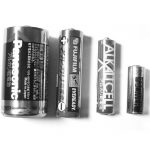
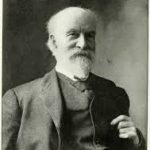
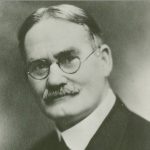
10 Canadian Inventors
- Alexander Graham Bell invented the telephone, among other devices, in 1876
- James Naismith created the game of basketball in 1891
- Joseph Armand Bombardier invented the snowmobile in 1922
- Gideon Sundback created the zipper in 1917
- Sanford Fleming developed a global system for setting time, including time zones
- Lewis Urry invented both the alkaline and lithium batteries while working for Eveready
- George Klein invented the electric wheel chair for the veterans from the Second World War
- Donald Lewis Hings invented the Walkie Talkie, a portable radio signaling system in 1937
- Peter Robertson invented the Robertson screw driver and the square head screw in 1908
- Susan Olivia Poole created the Jolly Jumper for babies
What You Should Know About Biometrics
 The second phase of Canada’s biometrics collection program came into force as of December 31, 2018. With this second phase, nationals from countries in Asia, Asia Pacific and the Americas must give their fingerprints and submit photos (biometrics) when applying for a Canadian visitor visa, study or work permit, or for permanent residence. This rule came into effect for applicants from countries in Europe, the Middle East and Africa on July 31, 2018, and for temporary resident applicants from 29 countries and 1 territory in 2013.
The second phase of Canada’s biometrics collection program came into force as of December 31, 2018. With this second phase, nationals from countries in Asia, Asia Pacific and the Americas must give their fingerprints and submit photos (biometrics) when applying for a Canadian visitor visa, study or work permit, or for permanent residence. This rule came into effect for applicants from countries in Europe, the Middle East and Africa on July 31, 2018, and for temporary resident applicants from 29 countries and 1 territory in 2013.
To make this process as convenient as possible for applicants, the Government of Canada has expanded its worldwide network of visa application centres (VAC) and is allowing applicants to go to any VAC in any country they are legally allowed to enter.
Applicants who come to Canada to visit, study or work temporarily need to give their biometrics only once every 10 years. Permanent resident applicants need to give their biometrics each time they apply.
Why Biometrics?
Biometrics immigration screening helps protects the safety and security of Canadians, and the integrity of the immigration system, while simplifying entry for travellers with genuine identities.
Do You Need to Provide Biometrics?
Generally, you need to give biometrics if you apply for:
- a visitor visa
- a work or study permit (excluding U.S. nationals)
- permanent residence
- refugee or asylum status
However, there are some exemptions.
Exemptions:
- Canadian citizens, citizenship applicants (including passport applicants), or existing permanent residents
- visa-exempt nationals coming to Canada to visit only
- children under the age of 14
- applicants over the age of 79 (there is no upper age exemption for asylum claimants)
- heads of state and heads of government
- applicants who qualify for or hold a diplomatic or official visa
- S. visa holders transiting through Canada
- refugee claimants or protected persons who have already provided biometrics and are applying for a study or work permit
- temporary resident applicants who have already provided biometrics in support of a permanent resident application that is still in progress
Temporary exemption: Applying in Canada
- If you are applying for a visa, study or work permit, or permanent residence in Canada – you are exempt until the in-Canada service is established.
Contact our team of experienced RCICs for assistance with determining if you need to submit biometrics.
Canadian Fun Facts (You May Not Want to Know)
Do you think you’re an expert on Canada? Want to become one? Here are some Canadian fun facts you probably didn’t know, and maybe will wish you didn’t afterwards.
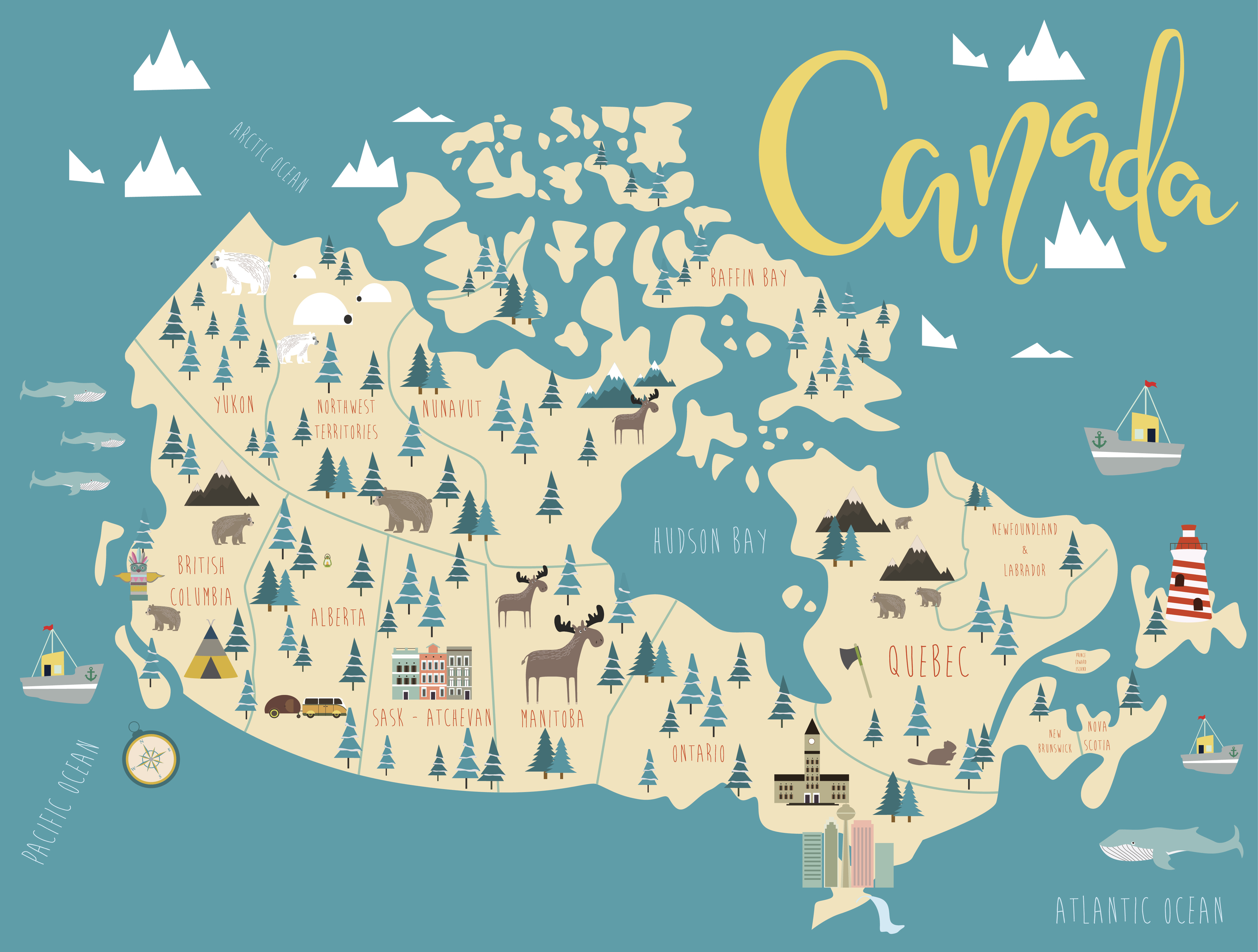
- Canadians consume more macaroni and cheese, a dish of English origin consisting of cooked macaroni pasta and a cheese sauce, per capita than anywhere else in the world
- One of the most popular foods is poutine, made with cheese curds and gravy on French fries, which originated in Quebec in the late 1950s
- John Panopoulos, a Greek-Canadian, created Hawaiian Pizza (ham and pineapple toppings) in 1962 in Chatham, Ontario
- Canada is one of the most educated nations in the world, with over half the population earning college degrees
- Wasaga Beach in Ontario is longest fresh water beach in the world
- Canada has more fresh water lakes than all the world’s lakes combined
- License plates from the Northwest Territories are in the shape of a polar bear
- Toronto, Ontario’s Yonge Street is the longest street in the world, 1896 kms
Official 2019 Top Choice Award Nominee
Active Professionals is proud to announce that we are an Official 2019 Top Choice Award Nominee!
Thank you to all of those who have taken the time to nominate us! Now, we need your help to WIN! Voting is now open and if you feel that we have earned your vote, we would appreciate you taking the time to vote for us. Winning the Top Choice Award is one of the largest endorsements a business can receive within North America & Europe, so this is a BIG deal!
Show us some love by voting for us. Your vote will automatically enter you into a draw for a chance to win a grand cash prize of $2000 or one of many Toppy T-shirts.
You can vote for us here: https://www.topchoiceawards.com/vote?query=Active%20Professionals. Otherwise, you can contact Top Choice Awards via email or phone to vote for us.
Voting ends January 2nd, 2019.
We would love to win the Top Choice Award… But we need your help to do so. If you believe we are your Top Choice, why not help us spread the word!
Thank you for your time and we appreciate your vote!
P.S your written feedback in the survey is anonymous but very important to us, as it allows us to know what you love about us and what we can improve to continue serving you every day and providing the best customer experience possible. Many thanks in advance!
